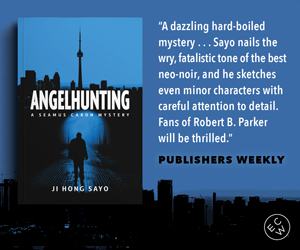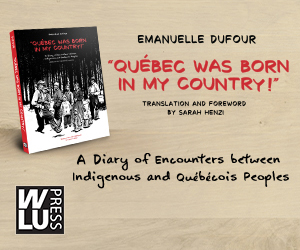"We Need to Celebrate the Efforts of Our Students" Author & Educator Larry Swartz on Teaching Creative Writing
As an instructor at U of T's prestigious teaching education program, OISE, Larry Swartz knows a thing or two about inspiring students. He's also written several teaching guides and textbooks, which focus on the role of arts and writing in learning. His newest offering, Word by Word (Pembroke Publishers) boasts 101 ways to keep students engaged and growing through the power of the written word.
We're excited to launch our newest interviews series with Larry today, the Teach Me to Write series, which focuses on the art, craft, and science of teaching creative writing in the classroom and beyond.
He tells us about the key areas of concern for teachers starting out in creative writing instruction, weighs in on whether good writing is something that can be taught, and shares the advice on teaching from his own educational mentor that always stuck with him.
Open Book:
Tell us about your experiences teaching creative writing.
Larry Swartz:
I was an elementary teacher for the first twenty-five years of my teaching career and each year throughout my experiences in the classroom, I continually challenged myself to provide best practices for teaching writing to students ages seven through thirteen. As a university literacy instructor for the past twenty years, I have been responsible for providing candidates who are enrolled in a teacher education program with theory and practical strategies for teaching writing effectively within a Language Arts program and throughout a range of curriculum areas. Each of the approximately one hundred teachers I meet needs to think about ways to be effective writing teachers. Two key areas of concern for beginning teachers are: 1) How do I motivate young people to write? 2) How can I provide meaningful feedback to enrich the writing lives of our students? To address these important issues, I consider my personal philosophy and assumptions as well as significant approaches drawn from experts in the field.
OB:
What is your approach or philosophy as a creative writing teacher?
LS:
I believe that the teaching of writing needs to...
- Provide varied contexts for authentic writing – a need or desire to say something to a particular audience (even if the audience is the self). Students need to use writing for purposes they feel are significant.
- Present mini-lessons or demonstration workshops explicitly teaching various elements of the writer’s craft.
- Use models of effective writing for each of the genres we invite our students to explore. If we want to teach descriptive writing, we need to offer examples of quality descriptions and build understanding how authors write effectively.
- Use quality literature as motivation, inspiration, and demonstration of good writing. Students need exemplary fiction, nonfiction, and poetry writing as mentor texts for their own writing.
- Allow time for talk. Talk (thought out loud) often prepares students to write (thought on paper or screen). When students are given opportunities to tell stories, retell stories, and sharing their knowledge and experiences about a topic, they are better prepared to write
- Respect choice. Students should have opportunities to write about topics that interest them in a genre that supports their choice of writing.
- Needs to be shared. We need to celebrate the efforts of our students as writers.
OB:
Do you think good writing can be taught?
LS:
Writing can be taught. Writing needs to be taught. Teachers of writing, need to make time for writing throughout their programs, share enthusiasm for writing, share their own writing clearly discussing the process they went through from draft to final copy, and provide meaningful feedback and conferring in order to stretch students’ writing power. An open and accepting writing environment will offer a range of writing experiences and products, including diaries, journals, letters, surveys, biographies, autobiographies, reports, poetry, legends, instructions, emails, blogs, etc.
My book, Take Me To Your Readers is rooted in the belief that teachers can lead their students to develop their reading tastes and support them in their meaning-making experiences through talk, writing and arts responses. This book shines a spotlight on instructional strategies that use children’s literature to build understanding of all types of reading and analyze the reading-writing connection in order to motivate students and shape the written work of our students. Some writing activities include writing a story about our names, writing biographies of a historical figure, preparing semantic maps in the math class, using thinking stems to respond to book about gender issues, exploring free verse poetry, writing in role from a character’s point of view.
Your CanLit News
Subscribe to Open Book’s newsletter to get local book events, literary content, writing tips, and more in your inbox
OB:
What is the most important thing you’ve learned from a writing teacher or a mentor?
LS:
Lucy Calkins, the guru of teaching writing in educational settings has informed me, stretched me, and challenged me in my own work as a teacher of writing. In her book, Living Between The Lines, Calkins writes: “Teachers and children bring the great cargoes of our lives to school, because it is by reading and writing and storytelling and musing and painting and sharing that we human beings have meaning.” (1991, p. 304). These words are on my shoulders as a teacher, as teacher of writing. I believe that those who teach creative writing need to respect that writers bring their lived experiences and that writing can provide a powerful and significant medium for uncovering and revealing their minds and hearts of the writers we teach.
OB:
What, in your view are the most important qualities in a writing instructor?
LS:
Effective teachers explain how each function of writing works in each genre. Acquiring the bits and pieces of the writer’s craft requires time. When writing instructors observe mentor texts that give us models, patterns and suggestions for how we can arrange our thoughts and information, we are helping to build understanding of revising, editing and sharing written work.
OB:
What can you tell us about your most recent book?
LS:
My newest publication is entitled Word by Word (Pembroke Publishers, 2019). This practical resource offers 101 ways to engage students by building vocabulary, improving spelling, and enriching reading, writing and learning. Chapter Four, entitled “The Write Word”, is framed on the premise that writing provides opportunities to explore the power of the word. Writing is thought on paper or screen. Words are the ingredients to make those thoughts visible. Writing is a complex act, a symbolic system – a means of representing thoughts, concepts and feelings. When we write, we are digging into our memories and our mind dictionaries, ordering symbols to record our thoughts and communicate to others. In this chapter, suggestions are made for exploring synonyms, using a thesaurus, replacing words, and exploring patterns for writing.
____________________________________
Larry Swartz is an instructor at the Ontario Institute for Studies in Education (OISE). He is the author of several Pembroke Publishers books designed to help educators choose and use literature to promote meaningful oral written and arts responses to texts. Filtered throughout his resources are practical strategies to engage learners with meaningful writing tasks centred on themes, issues, or genres. Take Me To Your Readers and Word by Word are two of his most recent books.




